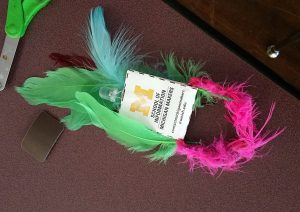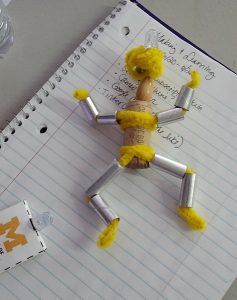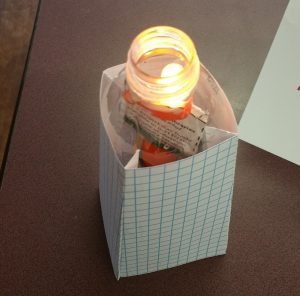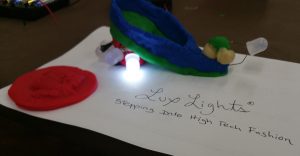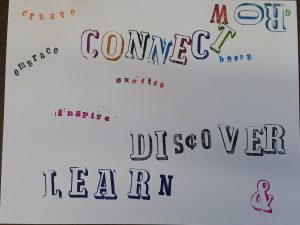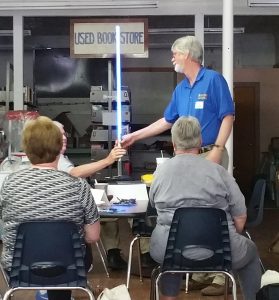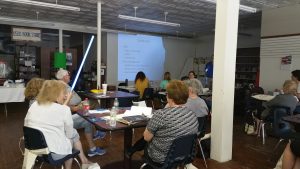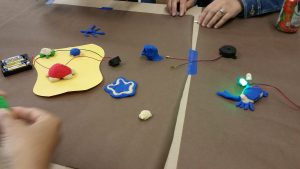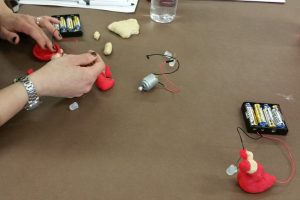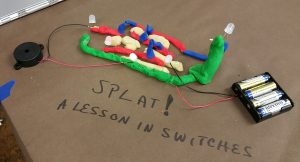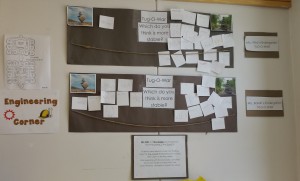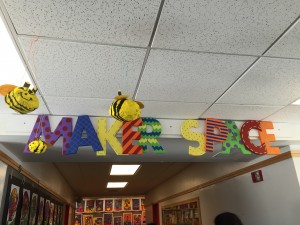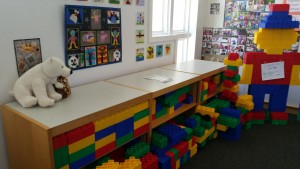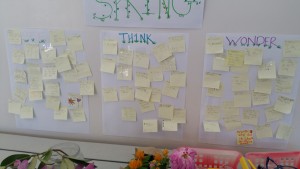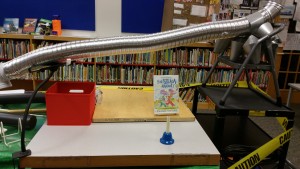Benton Harbor was the first experience for our newest team members (Quenton and Kamya) to lead a Making in Michigan Libraries event for adults, on May 10th, 2016. We got to see some of the improvements being made to the Benton Harbor Public Library building, including some unique art:
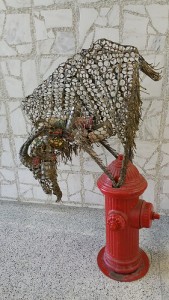
Some great modern art decorating a stairwell:
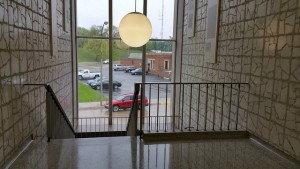
And our workshop was watched over by some national leaders:
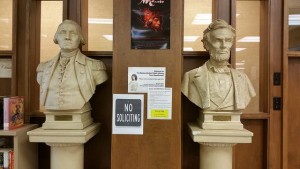
Overall, it was a great setting for our workshop.
Junk Box
As usual, the junkbox provided some of the most creative and visually interesting activities at our workshop. The idea behind our junk box project was to provide a design challenge. or We presented two options for this workshop: either work alone and illustrate a theme from a work of fiction or, as a group, brainstorm a challenge at your library or space and design a problem to solve it. We had plenty of attendees select each option. From there we allowed them free access to the eponymous junk box, filled with all kinds of semi-organized, semi-curated scrap material, including (but absolutely not limited to) small scraps of cloth, foam, and paper; spools of ribbon; a large plastic vase; the metal frame of a lampshade; straws; as well as non-junk tape, glue sticks, and scissors. We then left them to their devices for about an hour, occasionally intermingling to take the odd picture or ask about a particularly creative in-progress design. Following are some images of the in-progress activity:
Collecting “raw” materials:
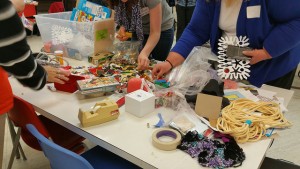
A literary illustration in progress:
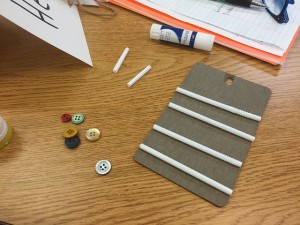
Early stage of design:
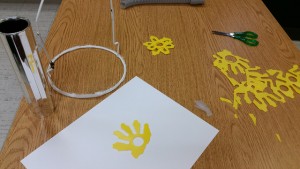
Creative use of straws and manilla folder:
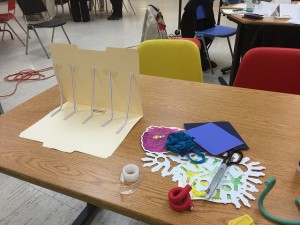
After the designs were completed (and lunch was had) we divided the room into two groups to perform a ‘gallery walk’, during which one group would host the other group as visitors and discuss their design, and after everyone had their fill the roles were reversed. We feel that this is a great way to develop skills in talking about your design process, presenting your work, and, for the visitors, networking and asking productive questions. An important rule of a maker-style gallery walk is that visitors are not to give even constructive criticism unless it is asked for – if it’s asked for, it’s absolutely fine. This allows the makers to have more comfort in sharing their work and prevents them from becoming disheartened if they’re self-conscious of their creation or it’s an early-stage prototype. Here are some more pictures of the final creations, along with some artists’ statements and titles:
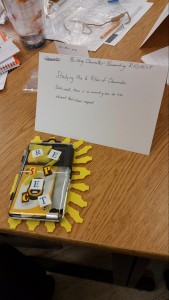
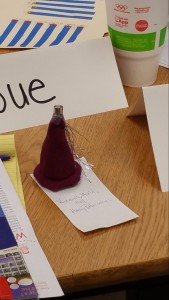
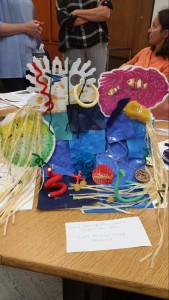
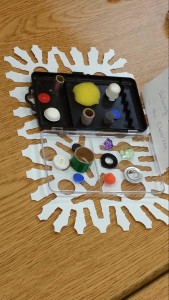
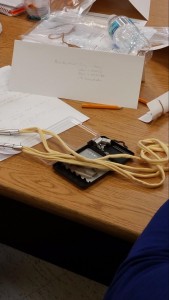
Peer Resource Sharing – Knowledge In the Room
We decided to have a semi-structured section for sharing resources which was very successful. Not only does it give our attendees a chance to share their passions and best resources, but also encourages networking between individuals who might not otherwise have learned that they shared a particular interest. During this sharing time we focused on adding these to our slides in real-time, so they would appear on the big screen and be easy to share after the event. Here is the list we got from this session:
-When introducing maker movement to teachers, will stay away from technology at the start. Start with crafts materials, then go to tech later.
– Started w/coloring and duct tape #coloryourcollections
– Use compasses & protractors to make coloring pages
– Writing as making (haikus on content topics)
– Kids who delete work before being done – easier for those who see kids daily to get done
– Oriental Trading Company? Depends on the situation. What about hacking the OTC kits in new ways?
– Abuse of materials? Limit what goes out, natural social consequences? Tape spoons/plastic flowers to pens/pencils?
– fabric stores, grocery stores castoffs
Obviously this had a context specific to this event, but the resources should stand relatively well on their own. One example of the power of this is that we’re exploring a new addition to the junk box activity, in which we include a foam kit similar to those that the Oriental Trading Company sells, and encourage our attendees to make something other than the intended end product using the pieces of the kit and the junk box. Not to spoil anything, but our Ann Arbor one-day event, including our “hacKIT” event, seems to have been a success!
You can download our slides here.
